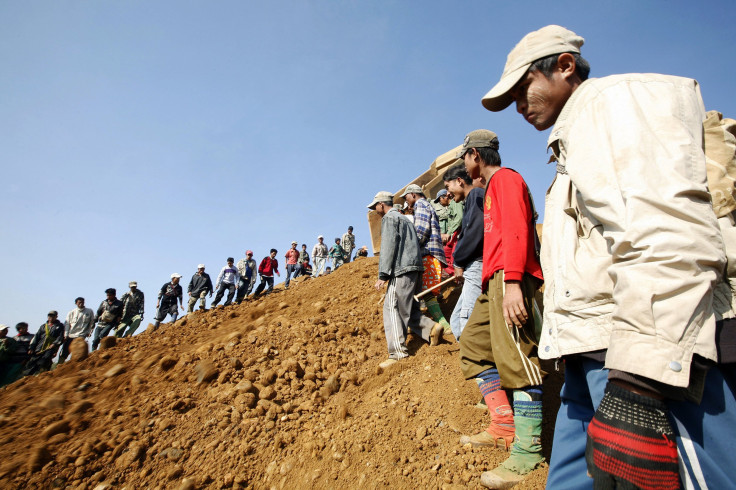Myanmar's Jade Trade, A Lucrative But Deadly, HIV-ridden Industry

Myanmar is the world’s primary source of top-grade jade, but the jade mining industry in the Southeast Asian nation remains mired in a humanitarian catastrophe two years after the reform government took over control -- tens of thousands of workers are exploited and heroin is abused on an unprecedented scale, creating the world’s largest HIV-infected community.
Earlier this year, President Obama let most American trade sanctions against Myanmar expire as the nation has made great humanitarian strides -- but maintained the ban on Burmese jade and ruby, speaking to the seriousness of the abuse that occurs in the mines in the northern state of Kachin.
The state is torn by a powerful independence movement -- the 8,000-strong rebel Kachin Independence Army (KIA), is home to criminal empires and sits close to China, which has strong interests in the area, according to the Australian Financial Review, meaning ownership of the jade mines in the state is at best opaque, and is often the object of military contention between the central government and regional interests.
Workers, lured by the prospect of a fortune in mining, are exposed daily to harsh and unsafe conditions. Disappearances and deaths are common and serve as a warning to those thinking of stealing. For most, the work becomes sufficiently unbearable that they take solace in the heroin-shooting galleries that exists alongside the mining district.
For less than the price of a beer, an injectionist administers the drug directly into the vein of a miner, delivering as many as 800 separate injections from the same dirty needle. Large quantities of the drug are provided by the mine owners, who pay their addicted workers with a daily fix.
An estimated 500,000 miners are paid this way, some consuming as much as 10 grams of pure heroin every day. On top of the unsanitary injections, workers also routinely have unsafe sex with prostitutes, creating an HIV pandemic in the region and giving Myanmar the highest rate of HIV infection among drug users in the world -- nine out of 10 addicted workers are HIV positive.
The trade, however, is a lucrative one. The exploitation of the trade yields billions of dollars each year. Both China and Myanmar governments, and the KIA struggle, stand in the way of assistance that NGOs, the United Nations and the World Health Organization can offer to the region, according to the Australian Financial Review.
To effectively change the situation, the Myanmar government will need to develop economic, legislative and social reforms to counteract the mining practices. Transparency is needed as in other industries in the country so that the operations can be regulated. Even so, the problem will not be an easy one to tackle.
“Myanmar’s mining industry will gain more traction in 2014 as reforms to the 1994 mining law will ease restrictions on ownership, and policies to the government puts itself on a track to observe the Extraction Industries Transparency Initiative,” said Christian Lewis, a researcher for the Eurasia Group, an economic and political risk consultancy, in an email to the International Business Times. “However, mining will remain one of the highest-risk enterprises in Myanmar due to unresolved ethnic conflicts in the northern and eastern peripheral ethnic states, which are among the most resource-rich.”
© Copyright IBTimes 2024. All rights reserved.





















